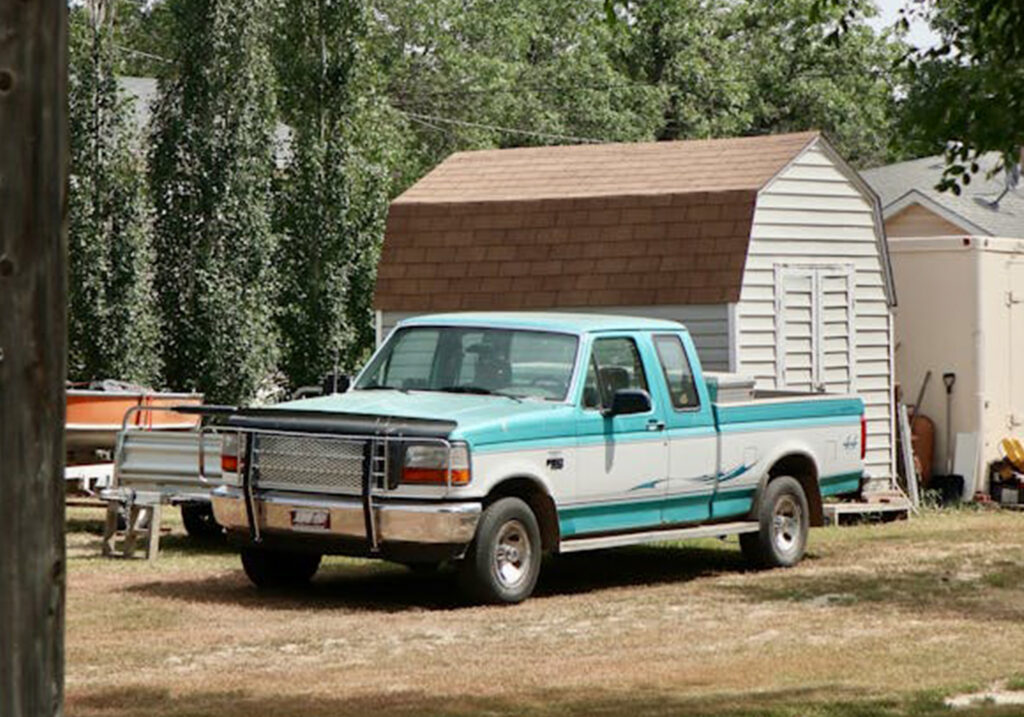Storage sheds are an essential addition to any property, providing a dedicated space to store tools, equipment, and other belongings.
Whether used in residential backyards, commercial spaces, or industrial sites, storage sheds offer an organized and secure way to keep items safe from the elements and clutter-free. These structures come in various sizes, materials, and designs, making them highly customizable to meet specific needs.
With the increasing need for extra storage, storage sheds have evolved from simple wooden structures to sophisticated units equipped with advanced security features and climate control. They serve multiple purposes, from gardening and home improvement storage to workshops and hobby spaces.
This article from the folks at Lion Barns will explore storage sheds in detail, covering their types, materials, uses, and maintenance requirements.
Types of Storage Sheds
Storage sheds are available in several different types, each designed to cater to specific storage needs and aesthetic preferences. The most common types include:
1. Garden Sheds
Garden sheds are one of the most popular types of storage sheds, commonly used by homeowners to store gardening tools, lawn equipment, and outdoor furniture. These sheds often feature shelves, hooks, and compartments for organizing smaller tools and supplies. Many garden sheds also have windows and ventilation to keep stored items dry and free from moisture buildup.
2. Utility Sheds
Utility sheds provide a versatile storage solution for general household and outdoor equipment. These sheds are typically larger than garden sheds and can store lawnmowers, bicycles, seasonal decorations, and even small recreational vehicles. Utility sheds often feature reinforced doors and locks for added security.
3. Tool Sheds
Tool sheds are designed specifically for storing tools and hardware. They are usually compact and organized, with built-in shelving, pegboards, and compartments for keeping tools accessible and protected from rust and weather damage. Many tool sheds also have workbenches for minor repairs and DIY projects.
4. Workshops
Larger storage sheds can double as workshops, providing space for woodworking, crafting, and mechanical work. These sheds are often equipped with electrical wiring, lighting, and ventilation systems to create a comfortable workspace. Work sheds are ideal for hobbyists and professionals who require a dedicated area for their projects.
5. Metal Storage Sheds
Metal sheds are durable and resistant to pests, rot, and fire. They are commonly used for industrial or heavy-duty storage purposes, including warehouse storage, automotive parts, and agricultural equipment. These sheds offer excellent security and longevity, making them a great long-term investment.
6. Resin and Plastic Sheds
Resin and plastic sheds have become increasingly popular due to their low maintenance requirements and weather resistance. Unlike wooden sheds, they do not rot, warp, or attract termites. These sheds are lightweight, easy to assemble, and often feature UV protection to prevent fading and cracking.
Materials Used in Storage Sheds
The material of a storage shed significantly impacts its durability, maintenance, and cost. The three primary materials used for constructing storage sheds are wood, metal, and plastic.
Wooden Sheds
Wooden sheds offer a traditional and aesthetically pleasing appearance that blends well with natural landscapes. They can be customized with paint, shingles, and windows to match the surroundings. However, wooden sheds require regular maintenance, including staining and sealing, to prevent rot, insect damage, and weather-related wear.
Metal Sheds
Metal sheds are highly durable and provide excellent security against theft and vandalism. Made from galvanized steel or aluminum, they are resistant to fire, pests, and harsh weather conditions. However, they may be prone to rust if not properly coated or maintained.
Plastic Sheds
Plastic or resin sheds are low-maintenance and resistant to moisture, rust, and UV damage. They are lightweight, easy to assemble, and do not require painting or sealing. Although they are not as sturdy as wooden or metal sheds, they are ideal for homeowners looking for a hassle-free storage solution.
Common Uses of Storage Sheds
Storage sheds serve a wide range of purposes, making them a valuable addition to any property. Some of the most common uses include:
1. Storing Gardening and Lawn Equipment
One of the primary uses of storage sheds is to house gardening tools, lawnmowers, and outdoor furniture. Keeping these items in a shed protects them from harsh weather conditions and prolongs their lifespan.
2. Creating a Workshop or Hobby Space
Many homeowners and professionals use sheds as workshops for woodworking, crafting, painting, and DIY projects. A dedicated workspace helps keep tools and materials organized while providing a quiet and functional environment.
3. Storing Bicycles and Outdoor Gear
Storage sheds provide a secure place for bicycles, sports equipment, and camping gear. This prevents clutter in garages and homes while ensuring outdoor gear remains in good condition.
4. Housing Seasonal Items
Holiday decorations, patio furniture, and seasonal clothing can take up significant space in a home. Storage sheds offer a convenient solution for keeping seasonal items organized and out of the way until needed.
5. Livestock and Animal Shelter
Some larger sheds are used for agricultural purposes, such as sheltering livestock, storing animal feed, and housing poultry. These sheds protect animals and supplies from harsh weather conditions and predators.
Factors to Consider When Choosing a Storage Shed
When selecting a storage shed, several factors must be considered to ensure it meets your needs and budget:
1. Size and Space Availability
Consider the size of the shed based on the available space and the number of items you plan to store. A small shed may suffice for gardening tools, while a larger one may be necessary for workshops or multiple vehicles.
2. Material and Durability
Choose a material that best suits your climate and maintenance preferences. Wooden sheds offer aesthetic appeal, while metal sheds provide security and plastic sheds require minimal upkeep.
3. Budget
Storage sheds come in a wide range of prices depending on size, material, and customization. Set a budget before purchasing to find a shed that meets your storage needs without exceeding financial constraints.
4. Security Features
If you plan to store valuable items, consider sheds with reinforced doors, locks, and security systems. Some models also offer tamper-proof hinges and surveillance camera compatibility.
Maintenance Tips for Storage Sheds
To keep a storage shed in good condition and extend its lifespan, regular maintenance is necessary:
1. Inspect for Damage Regularly
Check for signs of wear, rust, rot, or leaks and repair them promptly to prevent further damage.
2. Keep the Interior Organized
Use shelves, hooks, and containers to keep the shed organized and maximize storage space.
3. Apply Protective Coatings
For wooden sheds, apply sealants or paint to protect against moisture and pests. For metal sheds, use rust-proof coatings.
4. Clean the Shed Exterior
Remove dirt, leaves, and debris to prevent mold growth and structural damage.
Conclusion
Storage sheds provide practical and versatile storage solutions for homes, businesses, and agricultural settings. Available in various materials, sizes, and designs, they offer an effective way to organize tools, equipment, and personal belongings while protecting them from weather damage. Choosing the right shed involves considering factors such as material, size, budget, and security features. With proper maintenance, a storage shed can remain functional and durable for years, making it a worthwhile investment for any property owner.

